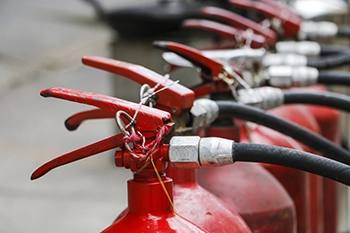Fire safety law in the UK requires landlords, business owners, and property managers to carry out regular fire risk assessments. A common question is how often a fire risk assessment is required, since the law gives guidance but not a fixed timescale. This creates confusion for landlords and those managing rented property.
This guide explains the legal framework, the industry standard for how often to complete a fire risk assessment, and the situations that trigger a review.
The Regulatory Reform (Fire Safety) Order 2005 sets out the legal duty for fire safety in most buildings. It requires the “responsible person” to make sure a fire risk assessment is carried out and that it is kept up to date. In residential lettings, this usually falls to the landlord or managing agent. In workplaces, it will often be the employer or building owner.
The law does not set a fixed timescale, such as “every year.” Instead, it requires assessments to be reviewed “regularly” and whenever there are changes that could affect fire safety. The wording gives flexibility but can cause uncertainty.
For HMOs and licensed properties, local councils may add further requirements through licence conditions. These often include annual checks and documented evidence of compliance.
Even though the law does not define an exact frequency, industry best practice fills the gap. Fire safety professionals and enforcing authorities generally expect risk assessments to be reviewed at least once every 12 months.
An annual review shows that the responsible person is taking their duties seriously and helps to capture changes that may not be obvious. For example, new tenants, different furniture layouts, or updates to fire safety guidance could all affect the risk profile of a property.
In higher-risk buildings such as HMOs or blocks of flats, a yearly assessment is strongly advised. In commercial premises or workplaces, annual reviews are also seen as the minimum standard.
Landlords often ask how often a fire risk assessment is required in HMOs. These properties carry higher fire risks due to the number of tenants and shared facilities. Councils usually require landlords to provide proof of an annual fire risk assessment as part of the licensing process. Some may even require more frequent checks, especially if the property has complex layouts or a history of issues.
For single-family rentals, the law still applies, but expectations are different. A full review every 12 months is best practice, but landlords should also revisit the assessment when tenants change or when safety features are upgraded.
Employers and commercial landlords must ensure staff and visitors are protected. Annual reviews are the norm, with additional assessments when work practices, occupancy, or building layouts change. Insurance providers also often insist on yearly documentation.
Properties such as care homes, hostels, or buildings housing vulnerable occupants need more frequent reviews. In some cases, six-monthly assessments are recommended to reflect the higher level of risk.
Apart from an annual cycle, certain events should trigger a review straight away:
By responding to these triggers, landlords and business owners reduce the risk of being caught out by inspections.
Even with the rules in place, mistakes happen. The most common include:
These errors can lead to enforcement action, fines, or worse, an unsafe environment for tenants.
To stay compliant and protect occupants, landlords and property managers should follow these steps:
Enforcement officers from local councils or the fire and rescue service can request evidence of a current fire risk assessment. Failure to provide one can lead to fines, improvement notices, or prosecution. In the most serious cases, unsafe properties can be closed until compliance is achieved.
The risk of financial penalties and reputational damage is significant. However, these outcomes are easily avoided by keeping assessments up to date and recorded.
Although the law allows the responsible person to carry out an assessment themselves, in practice, many landlords lack the expertise to identify all risks. Professional assessors bring technical knowledge and an up-to-date understanding of legislation.
By arranging a professional assessment, landlords gain:
Booking an assessment also demonstrates to tenants and enforcement officers that the landlord takes safety seriously.
So, how often is a fire risk assessment required? The law requires it to be “regularly reviewed,” but in practice this means at least once a year. More frequent checks are needed for HMOs, high-risk buildings, or whenever changes occur that affect fire safety.
By reviewing annually, recording updates, and arranging professional support where needed, landlords and managers can meet their legal duties and protect their tenants.
Our team provides fire risk assessments and follow-up inspections to keep properties compliant and safe. Contact us today to arrange your next assessment.

The Complete Fire Extinguisher Maintenance Guide for Landlords, HMO Owners, and Businesses Fire extinguishers save lives - but only if they are properly maintained. Whether...

Understanding Fire Safety at Home Fire safety isn’t just a concern for landlords and business owners. Every home, whether rented or privately owned, needs the...